Text
Summer Update
Lately I’ve been investigating the ecology and behavior of the silver spotted skipper (Epargyreus clarus) during its pupal life stage.
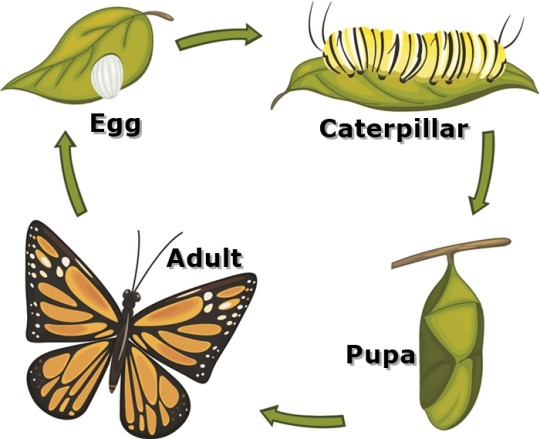
While E. clarus is well known for building shelters on live leaves as a caterpillar, I found that individuals also build shelters for themselves out of dead leaves just prior to pupation.

An E. clarus caterpillar crawls out of its shelter on a live leaf.

A pupal shelter, made out of dead leaves.

Peeking into a pupal shelter to view the E. clarus pupa inside.
During the pupal phase, individuals are mostly immobile and vulnerable, so the idea that a leaf shelter might help protect them from predators or unfavorable environmental conditions is intriguing to me. This summer, with help from others in the Weiss lab, I placed over 150 sheltered and unsheltered pupae along forested transects at Patuxent Research Refuge. Follow-up visits to the transects have allowed us to record the fate of the pupae, be it survival, death via predation, or natural eclosion (when the adult butterfly emerges from the pupa and flies away). This experiment is ongoing, and I’ll be putting out more pupae as the summer goes on. Results so far indicate that sheltered pupae are at an advantage:

Most of the “missing” pupae have shown clear signs of being eaten by a larger predator (such as a rodent).
Lots more to write about this project and the E. clarus pupal phase, but I’ll save the details of other experiments for future posts. Thanks for reading!
- Alli
#ecology#lepidoptera#entomology#women in stem#silver spotted skipper#butterfly#macro#field work#field werk#butterfly life cycle#science
1 note
·
View note
Photo




Our milkweeds are blooming and once again have many visitors - these are some pictures I snapped this morning.
8 notes
·
View notes
Photo
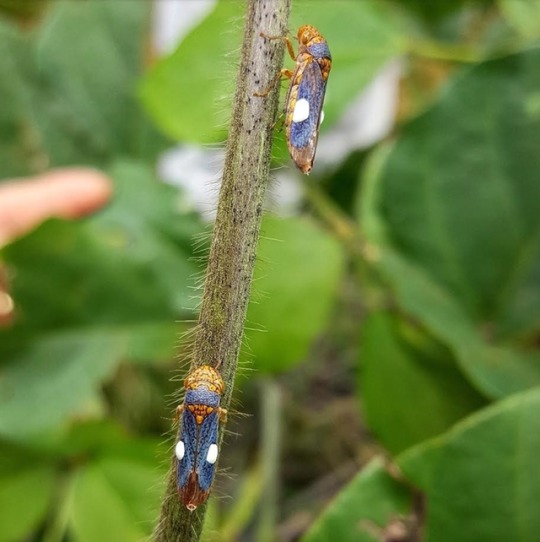
A few days ago we visited our field site to do some cleanup and preparation for summer experiments. We found these guys on our kudzu plants - called the broad headed sharpshooter, the scientific name is Oncometopia orbona. The bright white spots on the wings of these individuals are telling - they are madde of a waxy substance and will cover the eggs that these adult females are about to lay.
#ecology#entomology#macro#insect#hemiptera#sharpshooter#broad headed sharpshooter#oncometopia orbona
3 notes
·
View notes
Text
Long overdue update!

It’s been a busy spring for our lab. We’ve been working on some new projects, focusing on butterfly conservation during the pupal phase of the lifecycle. Last month, I presented a poster at the Smithsonian Botanical Symposium on my original research regarding the pupal behavior of the silver spotted skipper (Epargyreus clarus).
This month, we have undergraduate interns working at our lab and our butterfly colony is already going strong with hundreds of eggs being laid per day!
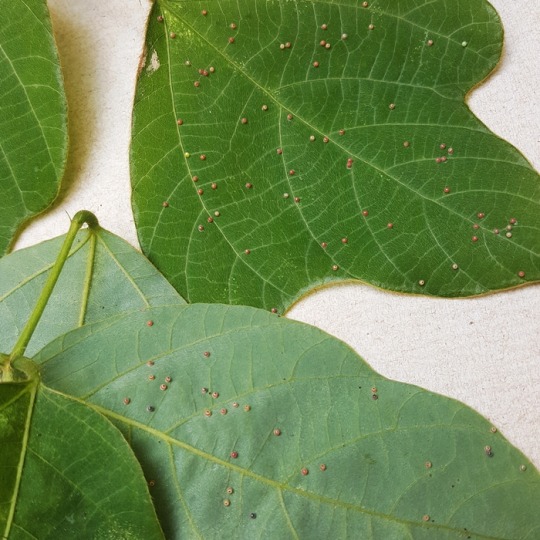
More details and pictures to come! Glad to be in the midst of the research season once again.
2 notes
·
View notes
Photo


The monarch butterfly (Danaus plexippus) is well known for its use of milkweed plants (genus Asclepias). The monarch caterpillars feed on milkweed, and are able to sequester some of the plant’s toxicity. Predators that attempt to eat the caterpillars must then contend with the unpalatable chemicals. Adult monarchs also nectar on the milkweed flowers.
The monarch is not the only insect that uses Asclepias, however. Many others enjoy foraging for nectar and pollen while the plants are flowering. Milkweed is therefore a popular plant for home gardens, as it helps sustain native pollinators and also the monarch butterfly. We have some growing right outside our lab, and when it’s flowering I always check to see who’s foraging!
#monarch#monarch butterfly#butterfly#lepidotpera#insect#entomology#science#nature#macro#summer#danaus plexippus#milkweed#asclepias
1 note
·
View note
Photo


Butterflies are able to ingest salt, protein and nutrients by siphoning them from muddy pools, a behavior known as mud puddling. Usually males exhibit this behavior, since female butterflies receive some salt and proteins from the male spermatophore during mating. This is an eastern tiger swallowtail that was mud puddling near our field site.
#butterfly#lepidoptera#insect#macro#nature#science#entomology#mudpuddling#mud puddling#swallowtail#eastern tiger swallowtail#field work
1 note
·
View note
Video
We keep our adult butterflies in large cages near our lab. We provide them with a honeywater solution, as well as flowers to nectar from. They love hot, humid days and have been producing plenty of eggs so far this summer!
#silver spotted skipper#epargyreus clarus#macro#insect#lepidoptera#entomology#video#autoplay#lantana#slow motion#slow motion video#science#nature#ecology#Hesperiidae
1 note
·
View note
Photo


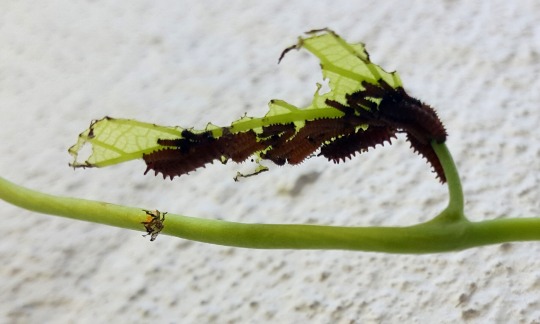


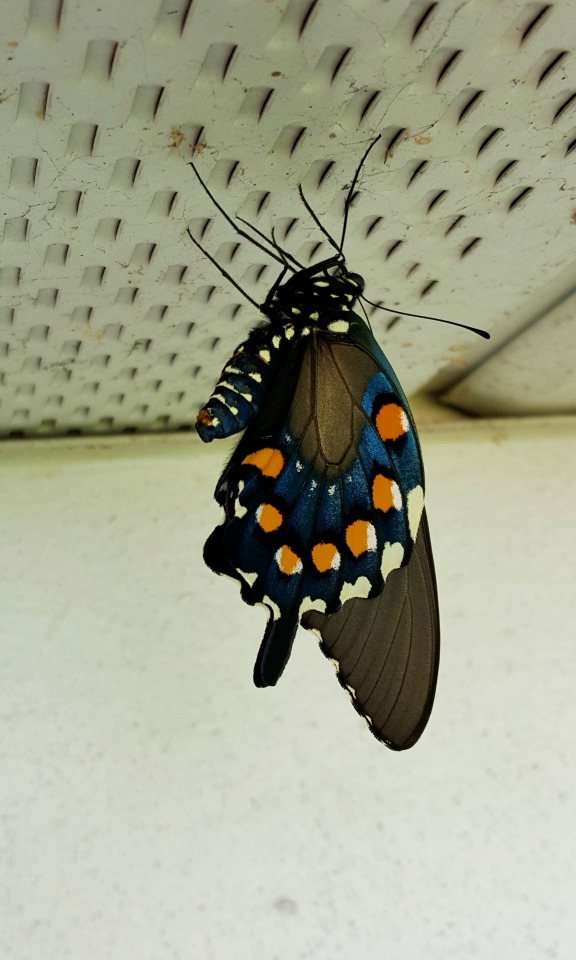
The pipevine swallowtail (also called the blue swallowtail, Battus philenor) grows exclusively on Aristolochia. Lucky for us, we have some growing right outside of the lab, and we were able to observe these beautiful animals from egg to adult last summer.
Aristolochia contains toxic chemicals which are sequestered within the feeding caterpillars, making the caterpillars and adult butterflies poisonous to predators. Several butterfly species mimic Battus philenor, such as the spicebush swallowtail (Papilio troilus) and red-spotted purple (Limenitis arthemis). The mimics aren’t toxic, but are able to assume the toxic reputation of the pipevine swallowtail by having a similar morphology.
#swallowtail#lepidoptera#insect#entomology#battus philenor#aristolochia#butterfly#macro#science#ecology#pipevine swallowtail
3 notes
·
View notes
Photo

The 2016 field season has officially started for our lab! Yesterday we went to our field site to clean up the garden a bit and prune back some of the plants. While we were there we saw some tiny, bright red velvet mites (family Trombidiidae). We have a lot of projects planned for the summer, so I’ll be posting updates as the season progresses.
Cheers to the summer!
1 note
·
View note
Photo
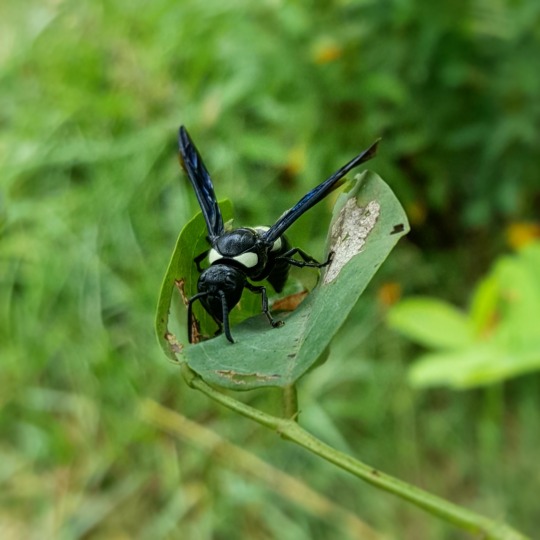
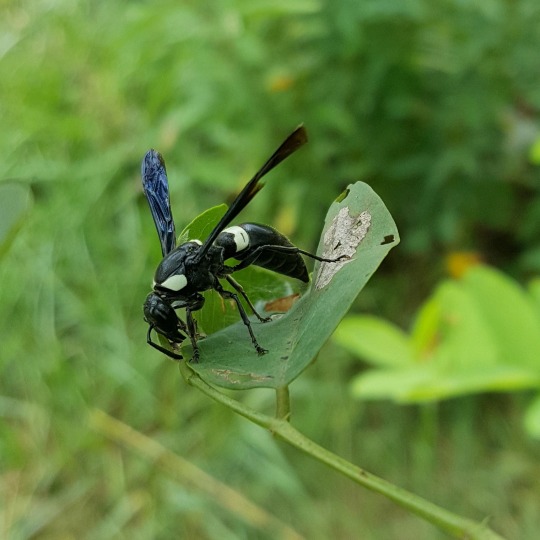
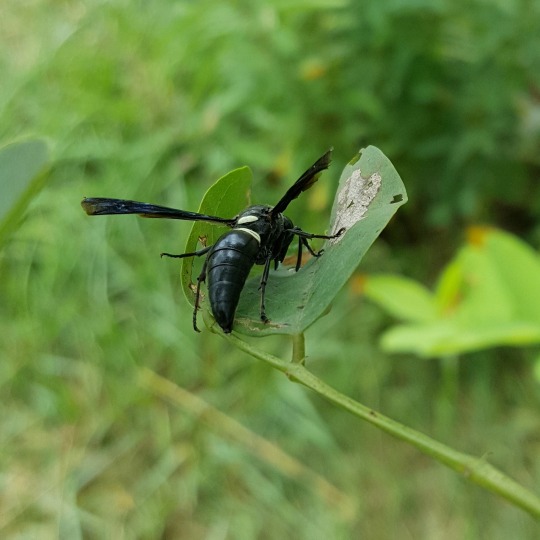
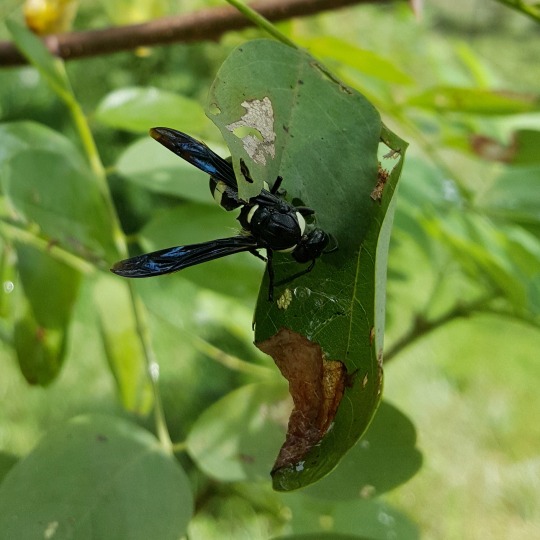
The silver spotted skipper is not the only caterpillar that uses a leaf shelter to avoid predators. Many species of caterpillars, leaf miners and others have the same strategy. Recently in the field I spotted this wasp attempting to enter the shelter of a leaf-tying caterpillar. It investigated for several minutes before eventually giving up. The caterpillar inside was just fine!
30 notes
·
View notes
Photo

What’s more exciting than spotting a bumblebee moth? Finding a mating pair!
3 notes
·
View notes
Photo



I’ve observed plenty of pollination, but I’ve never seen a bumblebee moth (Hemaris diffinis) in action before!
2 notes
·
View notes
Text
Stink Bug Hatchlings
One of the things that we’ve been doing is taking a census of the arthropods found naturally on our host plants. To do this, we’ve been finding patches of the six plant types and sampling 100 - 200 leaves per patch. Arthropods that we find are recorded and collected. Last week, we found some tiny, perfectly round eggs attached to the underside of a leaf. One day later, they hatched!

These are definitely stink bug hatchlings (family Pentatomidae), and they look a lot like the brown marmorated stink bug. The brown marmorated stink bug is a notoriously destructive generalist herbivore. But the young ones are quite adorable, no?
They’ve now reached their 2nd instar and are looking much more formidable.
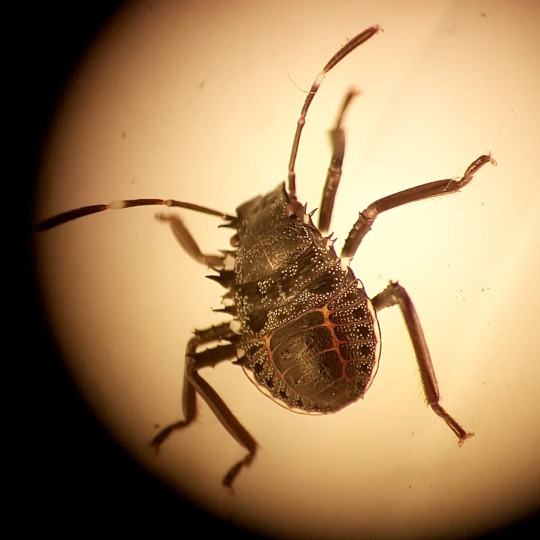
27 notes
·
View notes
Text
Dragonflies!
We have some gorgeous dragonflies keeping us company at our field site. I’ve been able to snap some pictures and identify a few of them.
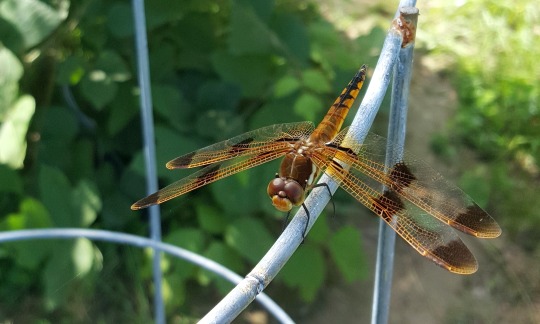
Painted Skimmer - Libellula semifasciata
[Bugguide.net Profile]
It turns out that this species can be tough to spot sometimes, due to its migratory patterns which only place it in the eastern United States from May to July. The unique pattern on its abdomen helps to differentiate it from the Halloween Pennant.

Eastern Pondhawk - Erythemis simplicicollis
[Bugguide.net Profile]
I’m less confident about the identity of this one; there are a lot of green dragonflies in the world! Male eastern pondhawks are a brilliant shade of blue, but females and young males are green.
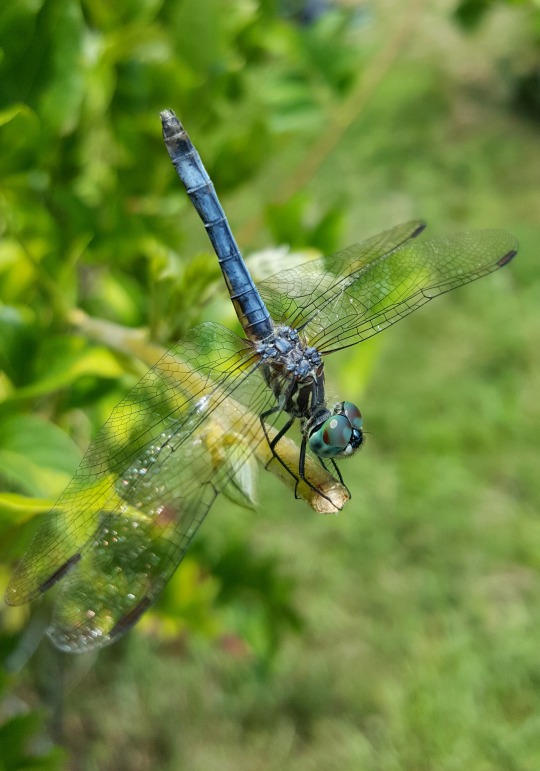
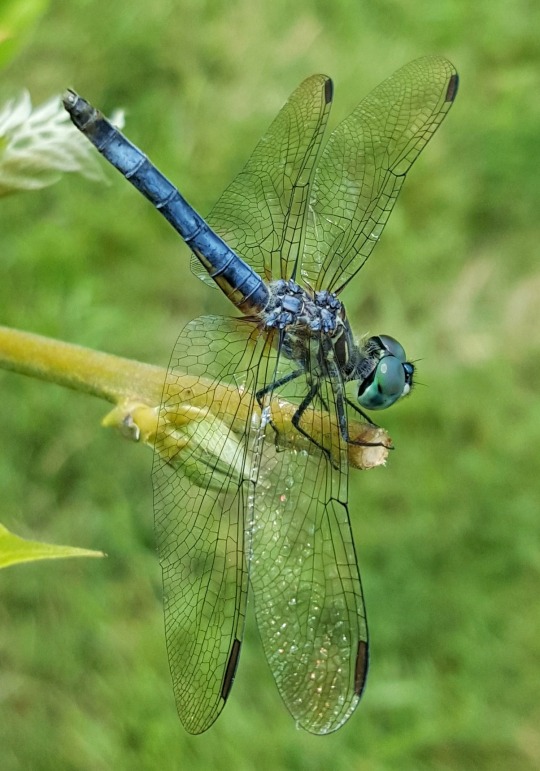
Blue Dasher - Pachydiplax longipennis
[Bugguide.net Profile]
This individual posed for several minutes, allowing me to get very close! Blue dashers are very common. This one is a male; females lack the black bands on their wings.
61 notes
·
View notes
Photo



The milkweed flowers growing just outside of our lab have been quite popular lately!
0 notes
Text
The first few weeks in my new lab:
I moved to DC at the beginning of June after graduating with my Bachelors of Science in biology at the University of Illinois at Chicago. I have been working in the lab and in the field with my advisers, Martha Weiss at Georgetown University, and John Lill at George Washington University. It’s been great to get started, explore our field sites, and meet everyone who is working on the project!
Broadly, we are interested in the tri-trophic system of caterpillars, their host plants and predators. By placing naive caterpillars on different host plants and leaving them either protected from predators or exposed, we are able to compare the suitability of different host plants in terms of both nutritional quality and associated predators. Insects are short lived, and the predator assemblage associated with each plant can change dramatically over the course of a season. Our project is long term, and will examine the changes in caterpillar-plant-predator relationships over time.
More specifically, we are working with the common and charismatic silver-spotted skipper (Epargyreus clarus). These butterflies are perfect for this project, due to their unique house-building behavior as caterpillars. After emerging from its egg, each caterpillar starts its life by making a tiny shelter using only a leaf and a bit of silk. The shelter protects it from foraging predators (most of the time), but the caterpillar must still leave its shelter to eat. As it gets bigger, it builds larger and larger homes for itself, but usually doesn’t travel far from its previous shelter. This is a wonderful feature for a scientist, as we are able to track each individual throughout the course of its life.

A 5th instar Epargyreus clarus caterpillar.

The adult butterfly. Note the silver spots!
There’s so much more to write about this project - and I will! I’ll also be posting pictures from the field. If you have questions about this project, you can ask me on tumblr or email me. Thanks for reading!
- Alli
0 notes